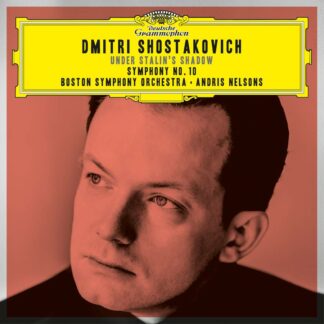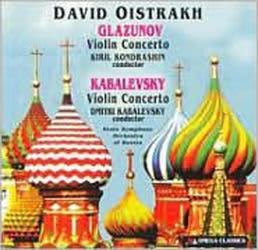Περιγραφή
Αναλυτική Παρουσίαση
|
Claude Debussy never sought a teaching post, but he maintained a relationship with the Paris Conservatoire for much of his career and, in 1909, was appointed to its Board of Directors (le Conseil Supérieur) by Gabriel Fauré. The newspapers responded wryly at the hitherto rebellious composer becoming part of the establishment, but Debussy did not much care. He was quite ill by this time, his doctors initially prescribing a heady mix of exercise, morphine, and cocaine. One of Debussy’s duties in his Conservatoire role was to write two pieces for the clarinet competitions to be held the following year, for which he also sat on the jury. He completed one, the Première rhapsodie, but never finished a second. (His Rhapsodie pour orchestra et saxophone, begun in 1903, was later realised by Jean Roger-Ducasse.) The Première rhapsodie leaves the soloist with nowhere to hide, exploiting the clarinet’s most dangerous registers and fingerings and demanding exceptional breath control. All this while taking us on a whistle-stop tour of emotions and tempi: in under ten minutes, the work passes through about 20 different tempo markings. The work starts in a mood of dreamy lyricism before unfurling playful chromatic ideas reminiscent of Debussy’s piano piece, Poissons d’or from his second volume of Images (1907), concluding with a jazzy gesture of bravado. Debussy originally scored the Rhapsodie for clarinet and piano before arranging it for clarinet and orchestra in 1911. In 1908 he spoke of his approach to orchestration: “I try to use each timbre in its pure state; as Mozart does, for example… Strauss’s orchestra is nothing but a compound like an American drink, which mixes eighteen ingredients; all the individual tastes disappear. It’s a cocktail orchestra… Split up the woodwind. Mix the bassoons up with the cellos, the clarinets and oboes with the violins; so that their entries don’t sound like somebody dropping a parcel.” Carl Nielsen also prized musical directness, although of a different kind often based on folk elements from his native Denmark. In his book Living Music he argued that: “The simplest is the hardest, the universal the most lasting, the straightest the strongest, like the pillars that support the dome.” Following years of personal crisis and professional duties that risked stifling his creativity, as well as sadness at the lack of international recognition for his music, Nielsen was rejuvenated by an encounter with the Copenhagen Wind Quintet in 1921. He heard them playing Mozart and promptly composed his Wind Quintet for the group, which he admired for its musicality and tone. Nielsen intended to write a concerto for each member of the quintet and ended up completing two: a Flute Concerto (1926) and the Clarinet Concerto (1928) for the ensemble’s clarinettist, Aage Oxenvad. The Clarinet Concerto – regarded by many as the most significant of the 20th century – is characterised by conflict, with tonal tussles between the keys of F and E, often punctuated by snare drumrolls apparently reflecting Nielsen’s anxiety at the unsettled world in which he found himself. These stark juxtapositions may also have been composed with the soloist in mind; Oxenvad was bipolar, and the snare often interrupts the clarinet in its softer moments. Nielsen described the clarinet as: “at once warm hearted, and completely hysterical, gentle as balm and screaming as a streetcar on poorly lubricated rails”. Of the Concerto he wrote: “I actually have no idea how it will sound. Maybe it won’t sound good, but I will not compose music if I always have to compose in the same manner.” The three sections of the Concerto flow seamlessly; the first includes an irascible clarinet cadenza, the second begins with a wistful horn solo, and the third is ushered in by another cadenza, with more prominent writing for the horn. There is a third cadenza and further flurries of activity before the work comes to rest in the exquisite string harmonics of the final bars. Nielsen’s Concerto was first performed at a private concert in September 1928. His son-in-law, Emil Telmányi, was conducting and described it as “music from another planet”. Public performances followed, to mixed reactions: the critic Olaf Petersen-Berger, after the Swedish premiere, wrote that the work was “absolutely the worst thing that this slightly too obviously experimental and provocatively sidestepping Dane has yet put together”. The Politiken newspaper, on the other hand, argued that Nielsen “has liberated the soul of the clarinet, not only the wild animal aspect but also its special brand of ruthless poetry… This work could hardly have found a more homogeneous interpretation. Oxenvad’s sonority is in tune with the trolls and the giants, and he has soul, a rough and stocky primordial force mixed with naive Danish mildness. Certainly, Carl Nielsen must have had his particular clarinet sound in mind while composing this Concerto.” If Nielsen was resentful of the cultural whims blocking his path to worldwide recognition, Witold Lutosławski was hampered even before his compositions saw the light of day, stymied by the tumultuous political events of his time. After the Second World War, when Lutosławski had been imprisoned by the German Wehrmacht but escaped to Warsaw, the Soviet Union established a Communist government in Poland. Artists who did not toe the party line and produce accessible, folkoristic music were censored; in 1948 Lutosławski was forced to leave the committee of the Polish Composers’ Union, and in the following year his First Symphony became the first major Polish composition to be banned for being too ‘formalist’. Lutosławski survived by composing palatable public pieces and folk-based concert works, but in private he explored more radical techniques. The Dance Preludes (1954) belong to the folk-based area of his output and remain one of his most popular works. Originally for clarinet and piano, Lutosławski made two orchestral arrangements in 1955 and 1959; we hear the earlier version, which retains much of the original clarinet line rather than passing it between the instruments. This arrangement was premiered at the Aldeburgh Festival, with Benjamin Britten conducting. For the five Dance Preludes Lutosławski did not use recognisable Polish folk melodies, but rather evoked the general character of Polish music with changeable meters and a strong sense of rhythm. The vivacious, staccato opening movement veers between groupings of 2 and 3, whereas the second dance is more lyrical. The central movement is in the style of a scherzo, with further metrical shifts and shrill writing for the soloist that evokes the E-flat clarinet used in some Polish folk music. Pizzicato double bass and low piano gestures set the scene for the meditative clarinet melody of the fourth dance, and the work concludes with a rustic but metrically complex final movement, in which the clarinet is sometimes at odds with the rhythm of the orchestra. Aaron Copland wrote some early songs in the style of Debussy, “who I thought was ‘hot stuff’ before Scriabin then Stravinsky took his place in my mind as the foremost modern composer.” By the time he started his Clarinet Concerto in 1947, Copland’s own distinctive voice had long since emerged. The work was commissioned by jazz clarinettist Benny Goodman, who later recalled: “I made no demands on what Copland should write. He had completely free rein … We never had much trouble except for a little fracas about the spot before the cadenza where he had written a repetition of some phrase. I was a little sticky about leaving it out… But I think Aaron finally did leave it out… Aaron and I played the concerto quite a few times with him conducting”. Goodman also balked at some of the more demanding passages and soaring pitches of the original score, making several alterations. For this recording we hear the original version based on Copland’s score and sketches, without Goodman’s amendments. Copland had finished the work late in 1948 but Goodman kept putting off the work’s first public performance, which he eventually gave during a broadcast of 1950 conducted by Fritz Reiner. The piece was quickly popular, and was well received by Copland’s peers, too. “Stravinsky and I corresponded occasionally through the years; we sent birthday greetings and developed an informal way with each other. Once in a while, I sent him a score. About my Clarinet Concerto he wrote (14 August 1950): ‘I want to tell you how much I love your Clarinet Concerto and how glad I have been to receive it from you…’ Yet even after we began to address each other as ‘Cher ami’ I never completely lost that awe I felt for Igor Stravinsky from the time I was a young student in Paris.” The Concerto consists of two outer movements sandwiching a central cadenza and draws heavily on jazz styles. After a slow, poignant opening movement, the cadenza introduces Latin American elements, which are further brought out in the jaunty, virtuosic final movement. As Copland explained: “The instrumentation being clarinet with strings, harp, and piano, I did not have a large battery of percussion to achieve jazzy effects, so I used slapping basses and whacking harp sounds to simulate them. The Clarinet Concerto ends with a fairly elaborate coda in C major that finishes off with a clarinet glissando – or ‘smear’ in jazz lingo.” Joanna Wyld, 2021 |










